Gallery (40 images): Tested! Fujinon XF 35mm f/2R WR
I recently received my own personal, brand new Fujinon XF 35mm f/2 lens, in silver of course, to match my silver X-E2. Actually, the combination looks rather retro and very nice to me, like an old Leica lens or even an old silver Hasselblad lens in miniature! The WR designation means it is resistant against moisture and dust ingress, joining the 16mm f/1.4 and 90mm f/2 lenses as the only primes with WR. How does it perform optically, you might be wondering? Well firstly, have a look at gallery of sample images by clicking on the above image, then continue reading below…
Suitably retro: the new silver Fujinon XF 35mm f/2R WR on my Fujifilm X-E2 body
with a wonderful Burke Mountain Leather custom strap and Fujifilm hand grip
From a mechanical standpoint, the lens barrel is made of solid metal, no plastic anywhere to be felt, well apart from the minimalistic round plastic lens hood it ships with. The AF is fast, very quiet and all internal, most definitely a major improvement over the XF 35mm f/1.4. This lens does not change length when focusing, a welcome improvement indeed, one that makes the lens immediately feel a whole lot more durable and rugged. If you don't like the small plastic hood, there is an optional, circular metal 'vented' lens hood available, the LH-XF35-2 at about $59, which gives better coverage, however so far I have found the lens admirably resistant to flare and since the optional hood cannot be reversed, I doubt I'll be buying one myself.
The damping on the focusing ring is excellent and the aperture ring is nice and firm with fairly crisp detents. It is ever so slightly too stiff in my view (nitpick #1), since the detents are not quite as crisp as the truly perfect aperture ring on my 90mm f/2 for example, yet somehow I feel they actually could be? Still, definitely in my top two or three Fujifilm lenses for overall quality of mechanical feel and ergonomics. Heck, even the tiny little 43mm lens cap (yes, it only has 43mm filter threads) feels great, the first Fujifilm cap that will remain on its lens, rather than being chucked into a parts bin and replaced by an excellent centre-pinch Nikon cap! And no, it's not because you cannot get a 43mm Nikon cap: Fujifilm's new front cap really does feel good and doesn't have the propensity to pop/slip from your fingers like virtually all the other Fujifilm lens caps do. If I recall, the exceptions are the front caps on the pro f/2.8 zooms, which were also new designs and felt superb. Anyway, enough about the cap... how are the optics?
Well, even wide open at f/2, across the vast majority of the frame, the lens exhibits excellent, top notch sharpness and overall contrast, as well as excellent micro-contrast, not really improved on much by stopping down. Just look at the first two wide open, f/2 shots of Nicole in the image gallery. When you focus really close at wide apertures though, there is a bit of softness and overall loss of contrast, but not bothersome in my view and can be used to your advantage even.
It is quite resistant to lens flare, better I'd say than the older XF 35mm f/1.4R, and the bokeh is surprisingly nice too. Not much nervousness, since there isn't much outlining of blur circles, and bokeh fringing is held in check, those nasty green or magenta outlines you sometimes get on high-edge-contrast, out-of-focus areas with fast primes. There is virtually no chromatic aberration either and vignetting seems gentle and not obvious, even wide open. All in all, a nicely corrected lens in many ways. There can be a soft glow around very bright light sources in the frame (the sun, very bright lights in night shots, etc.), but while some might classify that as a flaw, I actually kind of like it since it gives the lens a bit of character and can improve the transition into a clipped highlight, avoiding some harsh "digital looking" clipped edges, something I have occasionally struggled with from shots taken with the otherwise extremely flare-resistant XF 16mm f/1.4R WR for example. I have not shot with the new 35mm enough to actually be 100% sure that I am not imagining this highlight glow when compared to my other lenses, so further testing is needed.
It is quite resistant to lens flare, better I'd say than the older XF 35mm f/1.4R, and the bokeh is surprisingly nice too. Not much nervousness, since there isn't much outlining of blur circles, and bokeh fringing is held in check, those nasty green or magenta outlines you sometimes get on high-edge-contrast, out-of-focus areas with fast primes. There is virtually no chromatic aberration either and vignetting seems gentle and not obvious, even wide open. All in all, a nicely corrected lens in many ways. There can be a soft glow around very bright light sources in the frame (the sun, very bright lights in night shots, etc.), but while some might classify that as a flaw, I actually kind of like it since it gives the lens a bit of character and can improve the transition into a clipped highlight, avoiding some harsh "digital looking" clipped edges, something I have occasionally struggled with from shots taken with the otherwise extremely flare-resistant XF 16mm f/1.4R WR for example. I have not shot with the new 35mm enough to actually be 100% sure that I am not imagining this highlight glow when compared to my other lenses, so further testing is needed.
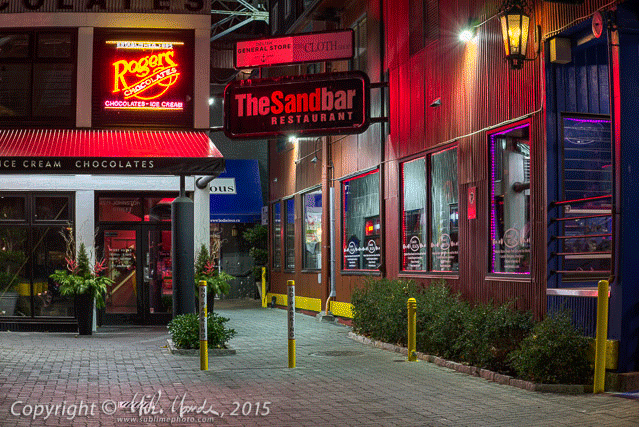
XF 35mm f/2R WR: before and after distortion correction in PhotoNinja
If the lens has flaws, there are two main ones and one of them, or both, likely result in a third. Firstly, there is quite a bit of native barrel distortion, at least for a 'normal' focal length prime. This lens is not fully corrected optically unfortunately, like most of Fujifilm's other fixed focal length lenses. The new 35mm's lens distortion data is embedded in an image's metadata though and out-of-camera JPEG files are well corrected automatically, in-camera. Adobe Photoshop and Lightroom will read this embedded distortion data and apply an auto-correction to RAW (.RAF) files too, a correction that cannot be switched off in fact, so if you are only processing your raws with Adobe software, you might think the lens is actually pretty darn well corrected! However, other raw converters which allow you to turn all lens corrections off, will show that the lens does have a fair bit of barrel distortion, which you can see in the animated GIF above.
The second main flaw is coma in the extreme corners at wider apertures. Some other Fujifilm lenses have coma too, in fact even the otherwise exceptional 16mm f/1.4, has a hint of it in the extreme corners when shooting wide open. However this 35mm is a bit worse than most other recent Fujifilm designs and I felt I should mention it. I no longer have the original 35mm f/1.4 to compare it to, but I do believe it suffered from coma at wide apertures too, quite a bit if I recall.
Coma causes small, round point sources of light to grow 'wings', perpendicular to a line drawn through the centre of the frame. Ideally of course, point light sources would render as nice crisp circles everywhere in the frame at all f-stops, similar to what you get with the outstanding 90mm f/2. Below is another animation that shows this effect when stepping through apertures from f/2 to f/8 on the new 35mm...
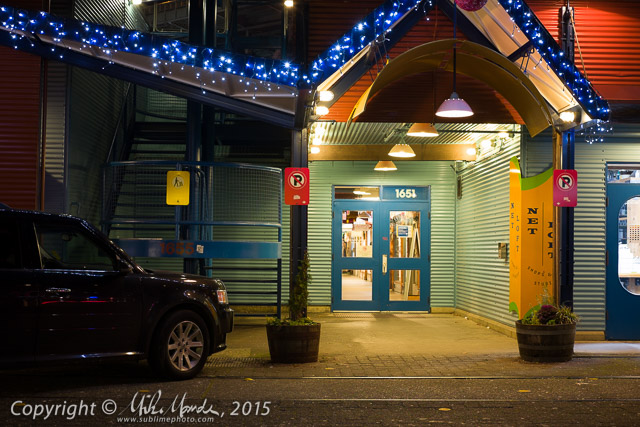
So apart from barrel distortion and coma... the third flaw is that the extreme corners are a bit soft at wider apertures. Between the coma causing a bit of detail smearing, and the software distortion correction causing some stretching (which can also smear detail), it's no surprise the corners are not perfect at wide apertures! The good news is that the edges of the frame are very sharp by the time you hit f/5.6 and the extreme corners look very sharp beyond f/8, so when stopping down, this optic can perform well as a landscape or architectural lens too, so it's not just a lens to grab when you want wide-open, soft-bokeh type shots. And remember that the majority of the frame is already razor sharp even wide open at f/2, so this softness is really only evident along the very edges of the frame at the widest apertures, and is slightly worse in the extreme corners, at least until it's stopped down further.
Back on a positive note though, notice how nice the point-source starbursts look when stopping down, even in the corners? Some don't like this effect, but I've always kind of liked it, as long as it's not too extreme. At f/11, the starbursts do become a bit pronounced, but at f/8, where I feel the extreme corners are more than acceptable even for a demanding nighttime architectural shot, the effect is more moderate.
The nice thing is that if you are using the lens for a pure landscape shot, and there isn't a straight horizon line near the top or bottom edge of the frame, you could leave distortion correction switched off when processing the raw files (with a suitable converter), thus regaining some of the lost corner sharpness... if you did want to shoot at wider apertures in those situations. For example, say were doing a handheld twilight landscape shot and you didn't have a tripod handy.
So... my fairly detailed analysis of the coma, distortion and resulting corner softness issues might make it sound like I don't like the lens and that it may not be worth considering... but far from it! Again, as mentioned previously, I have already grown to like this lens a lot (it won't be coming out of my camera bag any time soon) and its benefits definitely outweigh its few drawbacks.
Many 50mm primes suffer from similar aberrations too, but many also have low micro-contrast when shooting wide open, exhibit nervous bokeh, have lots of lens flare when shooting into the light and have obvious bokeh fringing when shooting at wide apertures, four flaws this lens does not suffer from. Overall I do feel it is an excellent performer and I doubt anyone would be disappointed after buying one. However, in my desire to be honest and not hide any obvious flaws or drawbacks in a piece of gear, I decided to detail my findings in a slightly more thorough fashion than usual.
At some point in the future, I do want to test it head-to-head with the XF 35mm f/1.4R since I actually believe the new 35mm would perform as good or better optically, on almost all fronts. When I owned the 35mm f/1.4, I wasn't quite as spoiled as I am now by Fujifilm's vast array of stunning primes. Now that I've had a lot of experience shooting with the 16mm, 23mm, 56mm and 90mm lenses, where even at wide f-stops they all perform, if not flawlessly, then at the very least extremely well, I think my standards have gone up a lot and I'm no longer quite as forgiving as I once was?
A final few nitpicks to go with the first one early on in this review: I wish the small supplied, plastic lens hood were silver on the outside, to match the rest of the silver lens' barrel. Next, the rubber WR seal fits so tightly against the rear lens cap, that it is actually rather difficult to remove! The rear cap seems to get sucked on there pretty good. I also wish the optional bayonet-mount, vented hood were reversible. It's so very close to having enough clearance for reversing, that I am amazed its designers didn't bother allowing for it.
Lastly, you'll notice in my short bokeh sequence in the gallery, that blur circles are cut off towards the edges of the frame (not perfectly circular), until one stops down a fair bit. The reason I am only classifying this as a nitpick, and not really a flaw, is that eliminating the issue would have meant a much larger optic. That said, my complaints about distortion and coma also likely stem from the fact that one of Fujifilm's major design goals with this lens called for it to be very compact, which may have led to the optical design compromises we see now. What I would love to see in the future, is a newly designed 35mm f/1.4, f/1.2 or heck, even an f/1.0. A normal prime lens designed without compromise, similar to the 16mm, 23mm, 56mm and 90mm lenses. Yes, this will mean a bigger, heavier and more expensive lens... but I think there's a market for that too. I'd still probably keep the little 35mm f/2 for those times I want to really travel light, but it'd be nice to have a "perfect" 50mm equivalent too.
So in conclusion, once again yes, I like this lens quite bit, despite its design leading to a few compromises. Buying this lens, one needs to identify its weaknesses, then learn to compensate for them. Quite simply, when you need the best corner sharpness, stop it down to f/8 or beyond. If you are isolating your subject away from the edges or corners and don't care about (or don't need) depth-of-field, then just shoot it at any aperture, even wide open - you'll probably love the results! Just have a look at the larger 3000 pixel wide images in my sample gallery and I think you'll likely agree...
Coma causes small, round point sources of light to grow 'wings', perpendicular to a line drawn through the centre of the frame. Ideally of course, point light sources would render as nice crisp circles everywhere in the frame at all f-stops, similar to what you get with the outstanding 90mm f/2. Below is another animation that shows this effect when stepping through apertures from f/2 to f/8 on the new 35mm...
XF 35mm f/2R WR: extreme top-left edge coma demonstration (click image for larger)
As you can see, by the time you hit f/8 the coma is pretty well gone even in the extreme corners. In addition, once you pull in just a bit from the corners, there is virtually no coma even at wider apertures, so this effect is really only obvious right near an extreme corner. Already by f/2.8, only one stop down from wide open, the lights at the right edge of the above crop, which are not all that far in from the extreme corner, are nearly coma-free.
Next, for reference, here's a small version of the full image that the above coma test crops were pulled from...

Back on a positive note though, notice how nice the point-source starbursts look when stopping down, even in the corners? Some don't like this effect, but I've always kind of liked it, as long as it's not too extreme. At f/11, the starbursts do become a bit pronounced, but at f/8, where I feel the extreme corners are more than acceptable even for a demanding nighttime architectural shot, the effect is more moderate.
The nice thing is that if you are using the lens for a pure landscape shot, and there isn't a straight horizon line near the top or bottom edge of the frame, you could leave distortion correction switched off when processing the raw files (with a suitable converter), thus regaining some of the lost corner sharpness... if you did want to shoot at wider apertures in those situations. For example, say were doing a handheld twilight landscape shot and you didn't have a tripod handy.
So... my fairly detailed analysis of the coma, distortion and resulting corner softness issues might make it sound like I don't like the lens and that it may not be worth considering... but far from it! Again, as mentioned previously, I have already grown to like this lens a lot (it won't be coming out of my camera bag any time soon) and its benefits definitely outweigh its few drawbacks.
Many 50mm primes suffer from similar aberrations too, but many also have low micro-contrast when shooting wide open, exhibit nervous bokeh, have lots of lens flare when shooting into the light and have obvious bokeh fringing when shooting at wide apertures, four flaws this lens does not suffer from. Overall I do feel it is an excellent performer and I doubt anyone would be disappointed after buying one. However, in my desire to be honest and not hide any obvious flaws or drawbacks in a piece of gear, I decided to detail my findings in a slightly more thorough fashion than usual.
At some point in the future, I do want to test it head-to-head with the XF 35mm f/1.4R since I actually believe the new 35mm would perform as good or better optically, on almost all fronts. When I owned the 35mm f/1.4, I wasn't quite as spoiled as I am now by Fujifilm's vast array of stunning primes. Now that I've had a lot of experience shooting with the 16mm, 23mm, 56mm and 90mm lenses, where even at wide f-stops they all perform, if not flawlessly, then at the very least extremely well, I think my standards have gone up a lot and I'm no longer quite as forgiving as I once was?
A final few nitpicks to go with the first one early on in this review: I wish the small supplied, plastic lens hood were silver on the outside, to match the rest of the silver lens' barrel. Next, the rubber WR seal fits so tightly against the rear lens cap, that it is actually rather difficult to remove! The rear cap seems to get sucked on there pretty good. I also wish the optional bayonet-mount, vented hood were reversible. It's so very close to having enough clearance for reversing, that I am amazed its designers didn't bother allowing for it.
Lastly, you'll notice in my short bokeh sequence in the gallery, that blur circles are cut off towards the edges of the frame (not perfectly circular), until one stops down a fair bit. The reason I am only classifying this as a nitpick, and not really a flaw, is that eliminating the issue would have meant a much larger optic. That said, my complaints about distortion and coma also likely stem from the fact that one of Fujifilm's major design goals with this lens called for it to be very compact, which may have led to the optical design compromises we see now. What I would love to see in the future, is a newly designed 35mm f/1.4, f/1.2 or heck, even an f/1.0. A normal prime lens designed without compromise, similar to the 16mm, 23mm, 56mm and 90mm lenses. Yes, this will mean a bigger, heavier and more expensive lens... but I think there's a market for that too. I'd still probably keep the little 35mm f/2 for those times I want to really travel light, but it'd be nice to have a "perfect" 50mm equivalent too.
So in conclusion, once again yes, I like this lens quite bit, despite its design leading to a few compromises. Buying this lens, one needs to identify its weaknesses, then learn to compensate for them. Quite simply, when you need the best corner sharpness, stop it down to f/8 or beyond. If you are isolating your subject away from the edges or corners and don't care about (or don't need) depth-of-field, then just shoot it at any aperture, even wide open - you'll probably love the results! Just have a look at the larger 3000 pixel wide images in my sample gallery and I think you'll likely agree...

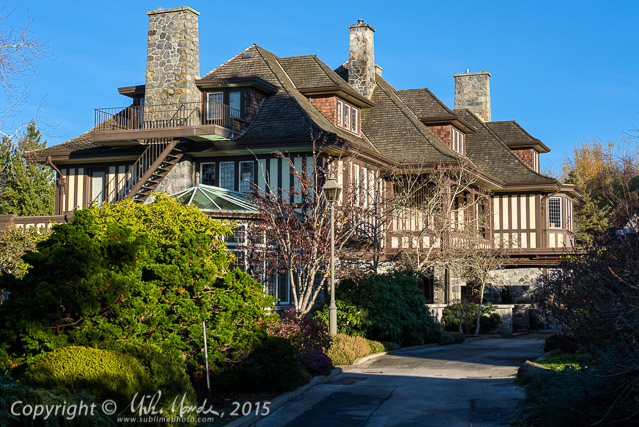
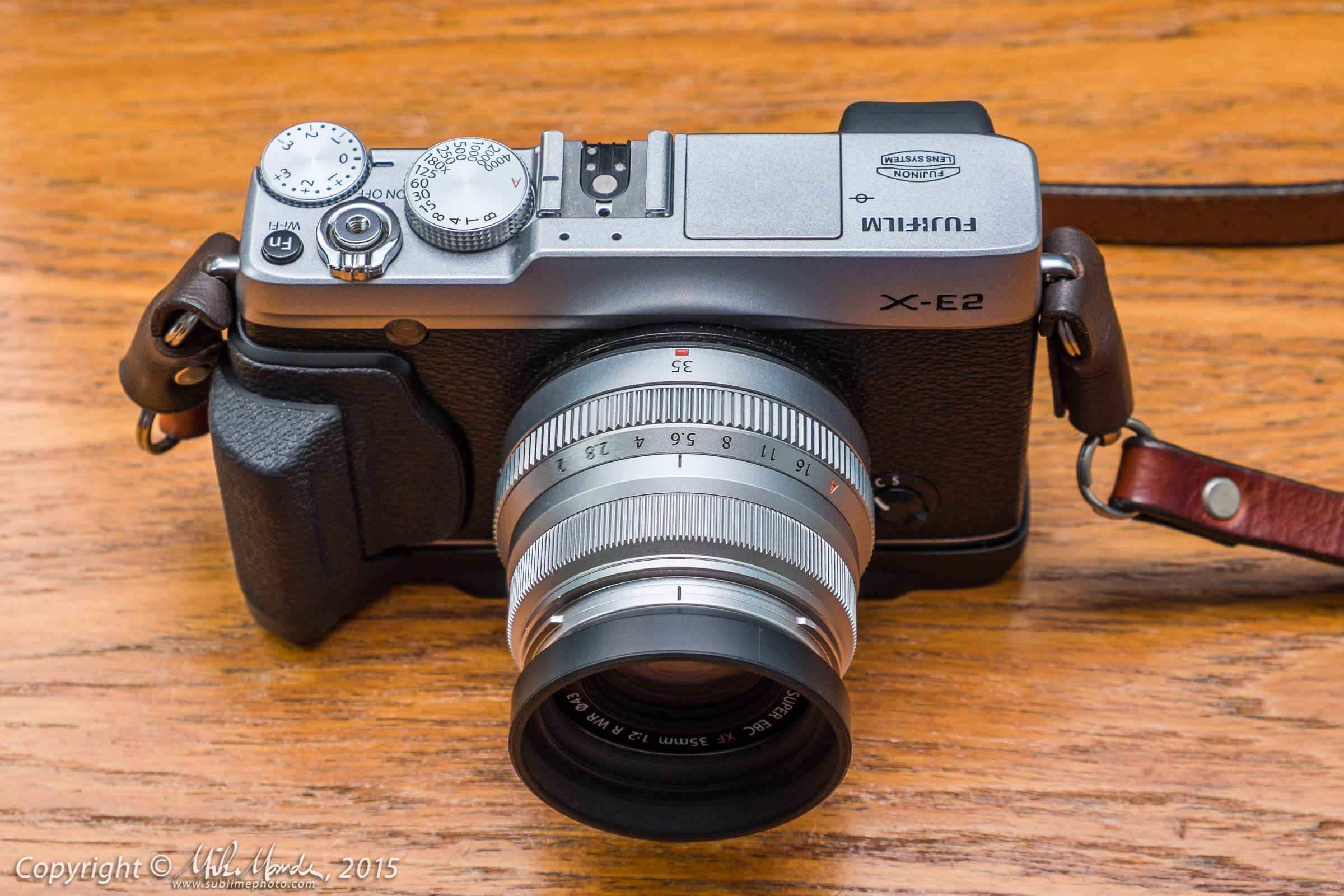
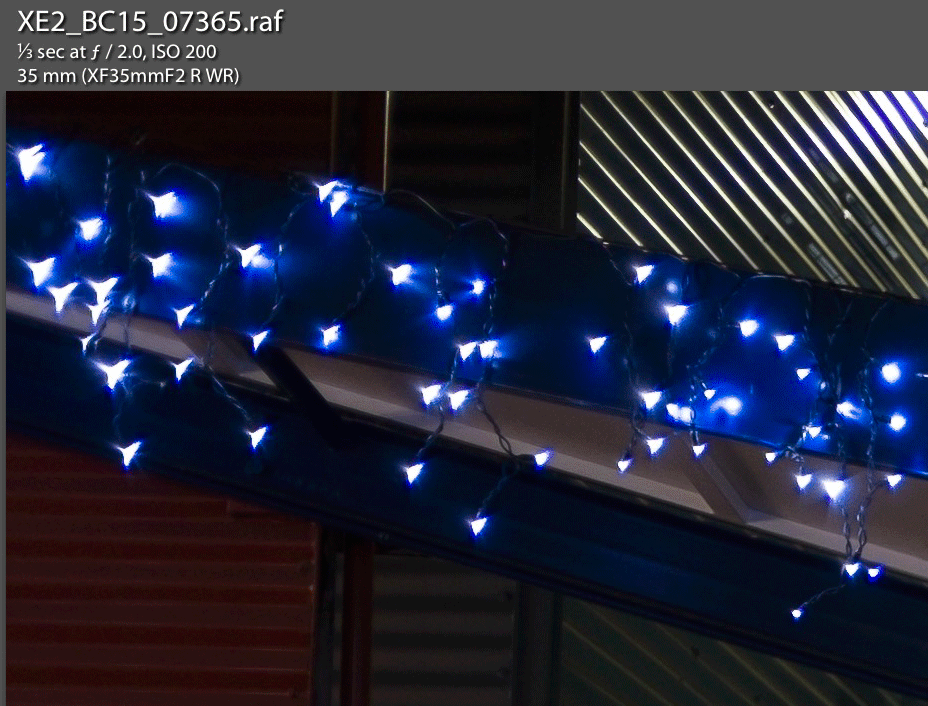

0 comments:
Post a Comment